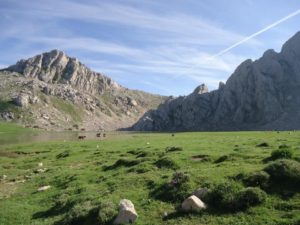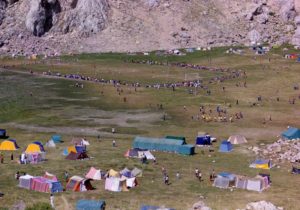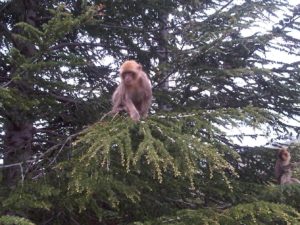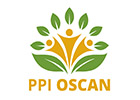As a result of the historical decline of watermills and agricultural activity, old pathways in the area of Thaghzout ended up abandoned and invaded by thick shrublands. As drought episodes became more frequent and river flows decreased, fire events escalated in the area, especially during the hot summer season. By removing shrubs and recovering the old routes once used for grinding wheat and barley, Association Écologique Tachemlit has made old pathways and water sources accessible once again. Last summer, the area registered zero fire casualties for the first time in a long time.

Making use of the new firewalls to develop ecotourism itineraries
Encouraged by the success of this PPI-OSCAN 2 project in Thaghzout, the population has engaged in new initiatives to support local development, including the development ecotourism itineraries and mountain sports. Since the restored pathways have made it possible to access the many natural lagoons in the area, where the remains of old mills and grindstones were found, a potentially new sustainable business is being discovered.
“Thanks to the inspiration of our PPI-OSCAN 2 project, some young people have installed small mountain lodges. For the moment, there are two of them and a new one is currently in construction “, explains Mr. Mohamed president of Association Écologique Tachemlit.

Indeed, the area of Thaghzout, situated north of the Djurdjura National Park in Algeria has stunning landscapes to visit. From the snowed mountains at 1000m of altitude, the lake of Goulmin descends to the Thaghzout plateau forming a river that crosses the entire zone. This river feeds the water reservoir of Taksebt, which in turn provides fresh water to other three departments in central parts of the country.
The highest water source in the zone is known as “Tawint Guidew”, which means “The Monkey’s Fountain”. In fact, Thaghzout is home to some populations of the Barbary macaque, an endemic North African species with small and scattered populations, currently listed as “Threatened” on the IUCN Red List.
Considered by some as an icon of the region, the cons ervation of the Barbary macaque is a sensitive topic, as some farmers report damages to their orchards, where fruit trees are grown. In this rich landscape, we can find a variety of natural lakes and ponds with names that tell the story of the local population, such as the Baby’s Lake (Tamda oufelghous), the Lake of the Elder (Tamda g’mgharen) or the Lake of the Fig Tree (Tamda ubaran).
ervation of the Barbary macaque is a sensitive topic, as some farmers report damages to their orchards, where fruit trees are grown. In this rich landscape, we can find a variety of natural lakes and ponds with names that tell the story of the local population, such as the Baby’s Lake (Tamda oufelghous), the Lake of the Elder (Tamda g’mgharen) or the Lake of the Fig Tree (Tamda ubaran).
Preserving plants of cultural and spiritual meaning
In this region of Algeria, it is the tradition to honour the dead by placing plenty of laurel leaves inside burial coffins. The tradition holds a deep spiritual meaning for this community. Unfortunately, due to the high amount of laurel removed to maintain this ritual (often taken from cliffs), the plant has started to become scarce and harder to obtain. In order to conserve the plant while respecting the local customs, the association is planting laurel in areas next to the ce meteries and helping locals too grow it in their own orchards.
meteries and helping locals too grow it in their own orchards.
During the restoration activities of the project, many plants traditionally used for medicinal purposes have been found and will be analysed with the help of experts, to achieve a better understanding of their natural value.






